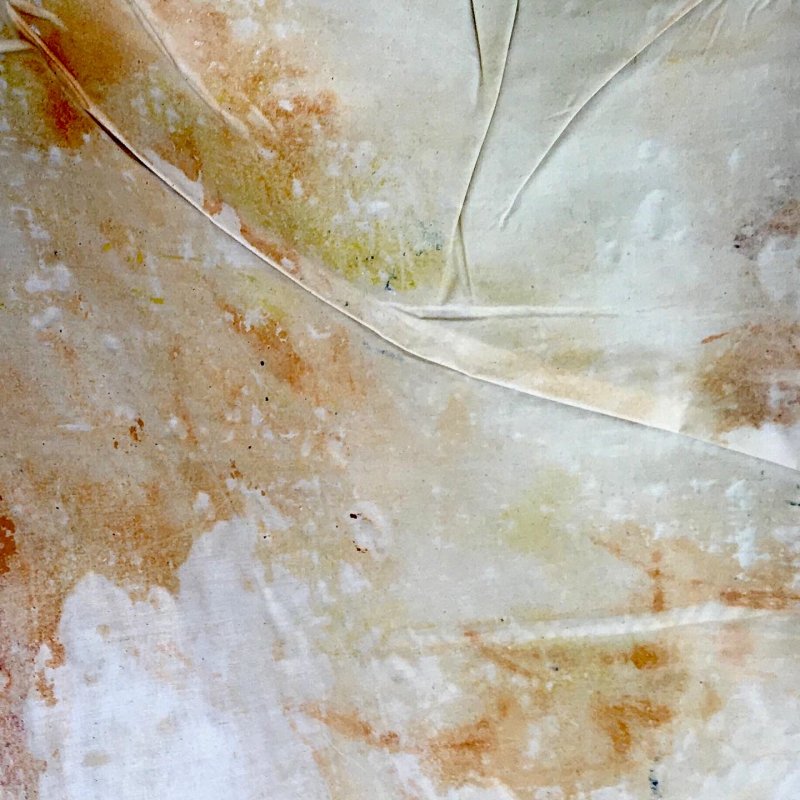Siiri Pohjolainen: Sun
Yö Galleria 25.8.-4.9.2022
Vernissage 24.8.2022 18–
Free entry. Welcome!
In the Light of the Sun
The works of Siiri Pohjolainen’s exhibition Sun show the surface of celestial bodies in colour. In her paintings and installations, their surface is configured in two ways: both as images of tangible surfaces and as conceptual presentations. Namely, the paintings not only resemble satellite images taken from distant spheres of gas and mineral, but they also symbolise the structures of surface invisible to us, the inhabitants of Earth.
In her works, Pohjolainen explores the topography of the Sun and of the craters on different planets. Literally, ‘topography’ means the physical appearance of the shapes of surface of an area. The Sun is a ball of gas composed of hydrogen and helium in which atoms collide with each other. That is when the gas becomes plasma. The collision of atoms generates such amount of kinetic energy that hydrogen atoms fuse into helium and temperature of the Sun increases exponentially. With a diametre of about 1,4 million kilometres, the Sun thus has no concrete core, nor does it have a solid crust. The outermost layer is a glowing photosphere a few hundred kilometres thick, from which light is emitted incessantly towards the inhabitants of Earth. Light and seeing enabled by it are traditional metaphors of knowledge in Western thought. However, the paintings’ surface hides a space that remains invisible and unknown to our gaze.
The idea of the tangible surface of the Sun is an illusion that we can nevertheless reach in paintings. The surface – or the image of what it looks like to our eyes – guides both the making of Pohjolainen’s paintings and the way how she treats these visions. In works made with acrylic paint, the canvas wrinkles, creases, becomes smooth and settles. Pohjolainen handles the ground of paintings as if they were textile works by sewing the canvas with a machine. What results from this work is something like a satellite-transmitted image taken at an immense distance, or alternatively extremely close: one may perceive traces of sand, mud, water or rock on surfaces, or a view magnified countless times by a microscope, invisible to the bare eye. To define the imagined distance implies a choice of where to focus one’s gaze: whether to align it with the unimaginable size of geological elements, or the figures on the canvas? The colours shimmer with shades of the earth, yellow, orange and brown, lava-like hot red, cool blue and grey, reminiscent of the night that falls on the planetary surface. The variation of terrain is tangible, and one can have a close look at its surface.
Siiri Pohjolainen’s sculptural, site-specific paintings live from the energy of their own surface and exceed the limits of their frames. Her Sun and planets radiate energy: their encounter makes the atmosphere of the exhibition burst out.
Martta Heikkilä, PhD

